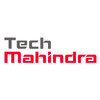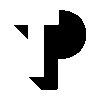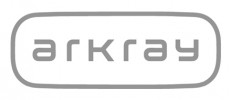12 Metaverse Jobs

Medical Machine Visualization
Metaverse
posted 5mon ago
Job Role Insights
Key skills for the job
Job Description
Medical machine visualization involves creating detailed and accurate visual representations of medical devices and their interactions with the human body. These visualizations serve multiple purposes, from training and sales to patient education and troubleshooting.
Pain Points Addressed by Medical Machine Visualization Medical machine visualization solves several challenges faced by medical professionals, trainers, and support teams. Below are common pain points:
Limited Machine understanding Understanding the spatial relationships and internal structures of medical machines can be difficult with traditional diagrams. Visualizations provide a 3D perspective, enhancing depth perception and improving comprehension.
Complex Machine Layouts Medical machines often have intricate configurations that are hard to grasp using 2D images. Interactive 3D models clarify these complex layouts by offering a detailed view from multiple angles.
Training Difficulties Traditional training methods may not effectively convey the operation and maintenance of complex medical machines. Visualizations offer immersive, hands-on training solutions, improving knowledge retention and skills acquisition.
Remote Support Inefficiencies When providing remote troubleshooting support, conveying complex visual information can be challenging. Visualization tools, especially in augmented reality (AR) and virtual reality (VR), allow for better remote guidance and problem-solving.
Static Manuals Conventional manuals fail to provide dynamic and contextual guidance. With AR-based visualizations, users can experience real-time assistance, making complex procedures easier to understand.
Key takeaways
Benefits of Medical Machine Visualization in Sales and Marketing Medical Machine Visualization - YouTube This is some text inside of a div block.
1.04K subscribers
Tap to unmute
If playback doesnt begin shortly, try restarting your device.
More videos on YouTube An error occurred while retrieving sharing information. Please try again later.
Medical machine visualization offers substantial advantages for both sales and marketing teams by simplifying complex ideas and engaging potential clients.
- Detailed Demonstrations : High-quality visualizations, including animations and interactive 3D models, help potential buyers understand the functionality and unique features of medical machines more clearly than static brochures.
- Reduced Sales Cycle : These representations answer common questions upfront, addressing objections and shortening the decision-making process.
- Remote Presentations : Using AR or VR, sales teams can conduct remote demonstrations, reducing travel needs and reaching broader audiences.
- Increased Engagement : Immersive, interactive visualizations capture the attention of potential buyers, making the sales process more engaging and memorable.
- Visual Appeal : Eye-catching and informative content can be used across websites, social media, and trade shows, enhancing brand visibility.
- Clarifying Complex Concepts : Medical machine visualizations simplify complex technologies, helping customers understand their real-world applications.
- Customer Engagement : AR and mixed reality (MR) tools allow potential clients to explore the features and benefits of medical machines hands-on, increasing interest and engagement.
Employment Type: Full Time, Permanent
Read full job descriptionSimilar Jobs for you
Share an Interview

























